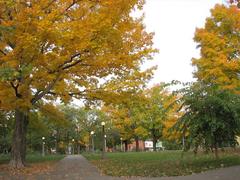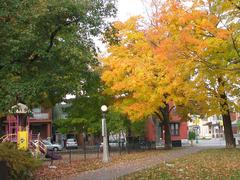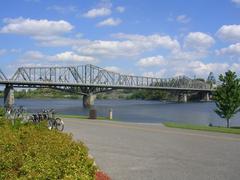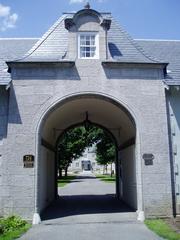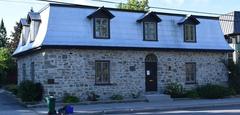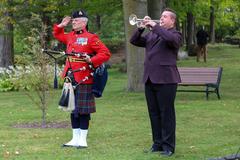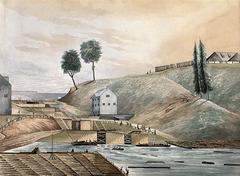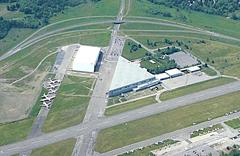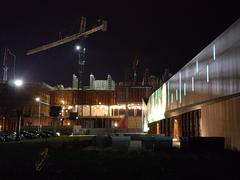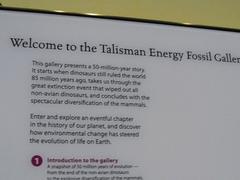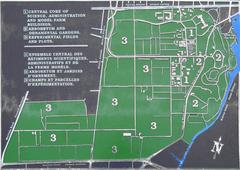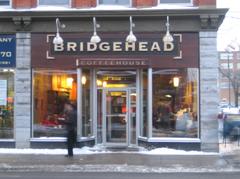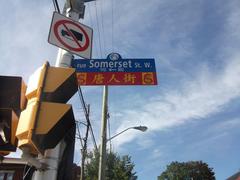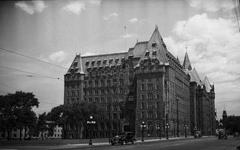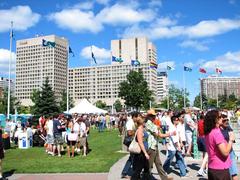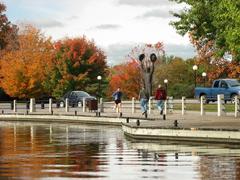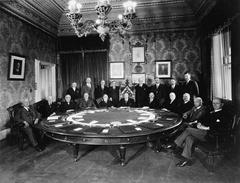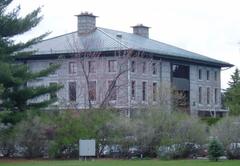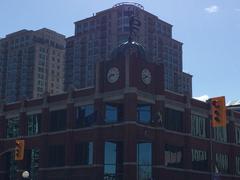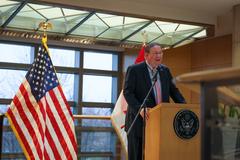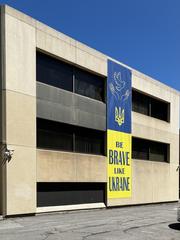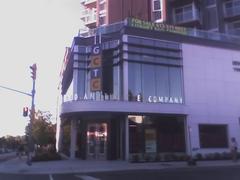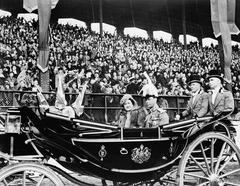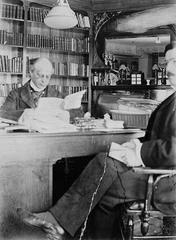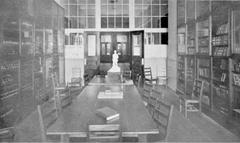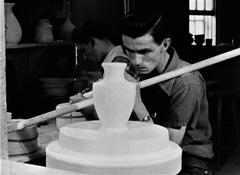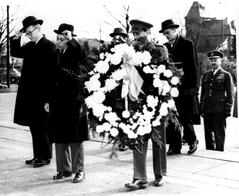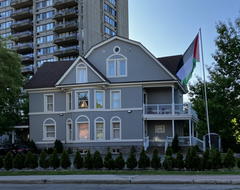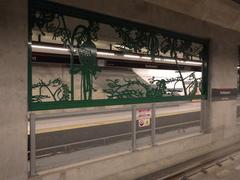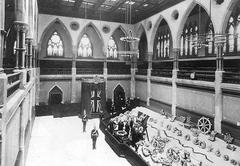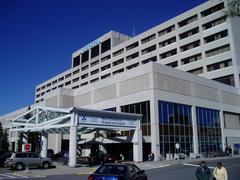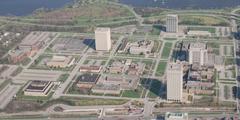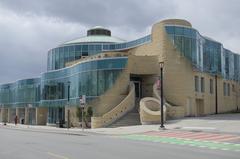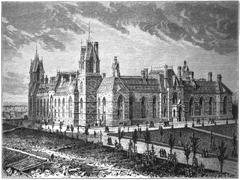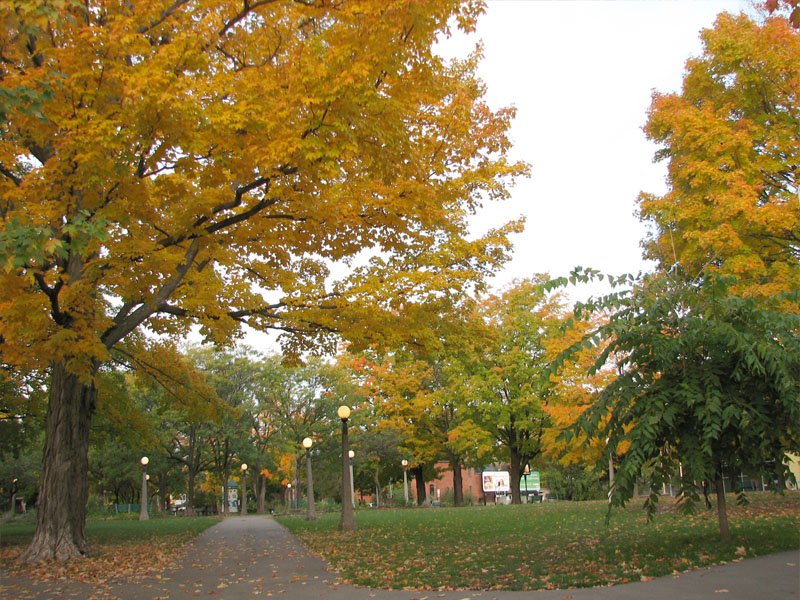
Dundonald Park Ottawa Visitor Guide: Hours, Tickets, History, and Tips
Date: 24/07/2024
Why Visit Dundonald Park in Ottawa
Nestled in Ottawa’s bustling Centretown neighborhood, Dundonald Park is an urban oasis rich in history and cultural significance. Established in 1905 and named after Douglas Cochrane, the 12th Earl of Dundonald, this park is a testament to the city’s commitment to preserving its green spaces while fostering community engagement. Dundonald Park’s lush canopy of century-old trees, historical monuments, and modern amenities make it a must-visit destination for both locals and tourists alike. Whether you’re interested in exploring its Edwardian-era landscaping, attending one of its many community events, or simply enjoying a peaceful retreat from city life, Dundonald Park offers a unique blend of the past and present. For more detailed information on upcoming events and activities, visitors can check the City of Ottawa’s website.
Guide Overview
- Introduction
- Origins and Development
- Architectural and Landscape Features
- Cultural and Social Significance
- Historical Events and Milestones
- Preservation and Modernization Efforts
- Visitor Tips and Practical Information
- Visiting Hours
- Tickets
- Accessibility
- Amenities
- Events
- Safety
- Nearby Attractions
- Environmental Considerations
- FAQ
- Community Engagement and Future Prospects
- Conclusion
Dundonald Park, Ottawa - Visiting Hours, Tickets, History, and More
Introduction
Nestled in the heart of Ottawa’s Centretown neighborhood, Dundonald Park is a historical landmark that offers a blend of rich history, cultural significance, and modern amenities. Whether you’re a history buff or just looking for a peaceful retreat, this guide will provide you with all the information you need, from visiting hours to the park’s storied past.
Origins and Development
Dundonald Park, located in the Centretown neighborhood of Ottawa, Canada, has a rich history that dates back to the early 20th century. The park was established in 1905 and named after Douglas Cochrane, the 12th Earl of Dundonald, who was a prominent figure in the British military. The park’s creation was part of a broader urban planning initiative aimed at providing green spaces for the rapidly growing city. The park’s design reflects the Edwardian era’s emphasis on formal landscaping and public recreation.
Architectural and Landscape Features
The park’s layout includes a variety of features that have evolved over the years. Initially, the park was designed with a central fountain, manicured lawns, and tree-lined pathways, which were typical of the period’s public parks. Over time, additional amenities such as playgrounds, benches, and flower beds were added to enhance its appeal to local residents. The park’s mature trees, some of which are over a century old, provide a lush canopy that offers shade and a sense of tranquility.
Cultural and Social Significance
Dundonald Park has long been a focal point for community activities and social gatherings. Throughout its history, the park has hosted numerous events, from local fairs and markets to public speeches and concerts. During the early 20th century, it was a popular spot for Sunday promenades and picnics, reflecting the social customs of the time. In recent years, the park has continued to serve as a venue for community events, including outdoor yoga classes, farmers’ markets, and cultural festivals.
Historical Events and Milestones
Several significant events have taken place in Dundonald Park, contributing to its historical importance. During World War I, the park was used for military drills and recruitment rallies, reflecting its role in the national war effort. In the post-war years, the park became a site for commemorative events, including Remembrance Day ceremonies. More recently, the park has been a gathering place for social and political movements, including environmental protests and community advocacy initiatives.
Preservation and Modernization Efforts
Efforts to preserve and modernize Dundonald Park have been ongoing, ensuring that it remains a valuable community asset. In the 1990s, the park underwent significant renovations, including the restoration of its historical features and the addition of new amenities. These efforts were guided by a commitment to maintaining the park’s historical integrity while adapting it to contemporary needs. Community involvement has been a key aspect of these preservation efforts, with local residents and organizations playing an active role in the park’s upkeep and development.
Visitor Tips and Practical Information
For those planning to visit Dundonald Park, here are several tips to ensure a memorable experience:
- Visiting Hours: The park is open daily from dawn until dusk.
- Tickets: Entry to Dundonald Park is free of charge.
- Accessibility: The park is easily accessible by public transportation, with several bus routes stopping nearby. For those driving, street parking is available in the surrounding area.
- Amenities: The park features a playground, picnic tables, and benches, making it an ideal spot for families and groups. Public restrooms are also available on-site.
- Events: Check the local community bulletin or the City of Ottawa’s website for information on upcoming events and activities in the park.
- Safety: While the park is generally safe, it’s advisable to visit during daylight hours and stay aware of your surroundings, especially if visiting alone.
- Nearby Attractions: Visitors can explore other nearby historical sites such as the Canadian Museum of Nature and Parliament Hill.
- Environmental Considerations: Visitors are encouraged to respect the park’s natural environment by disposing of litter properly and avoiding damage to plants and trees.
FAQ
What are the visiting hours for Dundonald Park?
- The park is open daily from dawn until dusk.
Is there an entrance fee for Dundonald Park?
- No, entry to Dundonald Park is free of charge.
What amenities are available at Dundonald Park?
- The park features a playground, picnic tables, benches, and public restrooms.
Community Engagement and Future Prospects
Dundonald Park continues to be a hub of community engagement, with various local groups and organizations actively involved in its maintenance and programming. The Friends of Dundonald Park, a volunteer organization, plays a crucial role in organizing events and advocating for the park’s preservation. Looking ahead, there are plans to further enhance the park’s facilities and expand its role as a community gathering space. These initiatives aim to balance the park’s historical significance with the evolving needs of the local population.
In summary, Dundonald Park is not just a green space but a living testament to Ottawa’s history and community spirit. Its rich heritage, combined with ongoing efforts to preserve and enhance its features, ensures that it remains a cherished landmark for future generations. For more detailed information on the park’s history and current activities, visitors can explore resources such as the Ottawa Citizen and Yelp.
